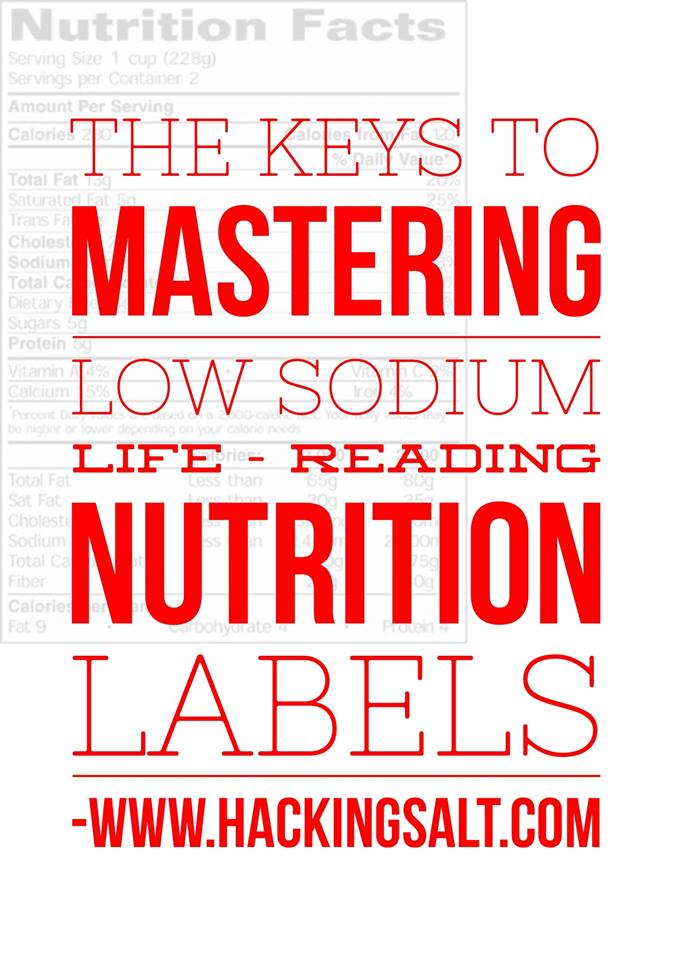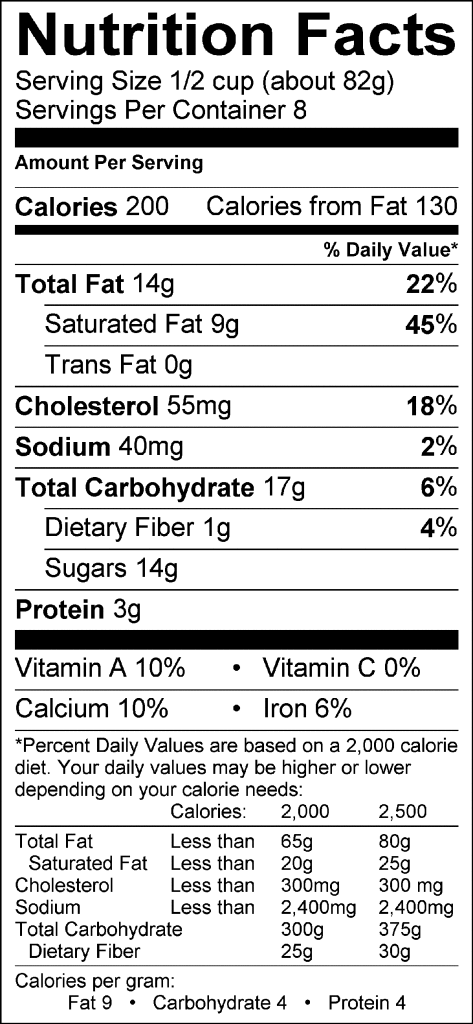How To Read Nutrition Labels
In my Low Sodium journey. One of the first things I discovered that I was terribly illiterate when it came to reading labels on packaged foods. I knew about looking at fat grams and calories, but pretty much glazed over any other info. Now days the first thing I do when checking out a product for purchase is to read the label. I want you to be successful on your low sodium journey, so here is how to read nutrition labels.
A Guide For How To Read Nutrition Labels:
The nutrition label is an essential tool to allow you to make good choices when filling that shopping cart.
Here is a a walk-through of the nutrition label found on most packages:
Serving Size
First, start by looking at the Serving Size. This will tell you how large one serving will be that contains the amounts of the nutrition amounts listed. Then, look at the Servings Per Container to check how many servings are in each package. Even small packages can contain many servings. If you eat more than one serving, you will need to multiply the nutritional information amounts. Clearly stated, if you eat two servings you will consume twice the amount of sodium listed on the label.
Calories
The energy in food is measured in Calories. You need the right amount of calories to stay at a healthy weight. If you eat more calories than you need, you will gain weight. Eat fewer calories than you need and you will lose weight.
Total Fat
Total Fat is the total amount of saturated, trans fat, polyunsaturated fats, and monounsaturated fats in one serving. There are such things as “good” or “healthy” fats, but we will discuss those in another post. You should control the amount of Saturated Fat and Trans Fat to protect against heart disease.
Cholesterol
Cholesterol is found in animal based products. There are “good” and “bad” cholesterol levels which we will also discuss in a different post, but the bottom line is that too much cholesterol can lead to heart disease.
Sodium
Sodium is a mineral found in or added to foods. Most people consume more sodium than they should on a daily basis. The American Heart Association has established that 1500 mg. daily intake of sodium is a healthy standard. Most Americans consume over 3400 mg. daily. Food labels cannot claim a product is “healthy” if it has more than 480 mg of sodium per labeled serving (for individual foods) or more than 600 mg of sodium per labeled serving for meals/main dishes, according to the U.S. Food and Drug Administration and U.S. Department of Agriculture.
Carbohydrates
Total Carbohydrate is the total amount of starch, sugar, and fiber found in a single serving.
Fiber
Dietary Fiber makes you feel full when you eat it. it also helps you to have regular bowel movements. Nutritional guides recommend you aim to consume 20 to 35 grams of fiber each day.
Protein
Protein helps you build muscle and gives you energy. Some sources of protein, such as some meat and dairy, can be high in cholesterol and fat. If you make better choices such as lean meats and low-fat milk products and include plant based proteins more often, it will aid you in maintaining a healthier lifestyle.
Vitamins
Vitamin A, Vitamin C, Iron, and Calcium are nutrients that are required to be listed on every food label. These are often nutrients that are too low/scarce in our daily diets and should be watched.
Values
Daily Values are the percentages of nutrients on one serving of food. These are based upon the standards established for people who eat about 2000 calories a day. Remember, not everyone needs that many calories each day, depending upon your weight and activity level.
Finally, just a note that I am not an expert on this and you should always consult your Physician before starting any diet. I got my information from the two links included above and from my own Physicians at the University of Minnesota – Heart Clinic. Let me know if you have any questions or insights to food labels in the comments below!


